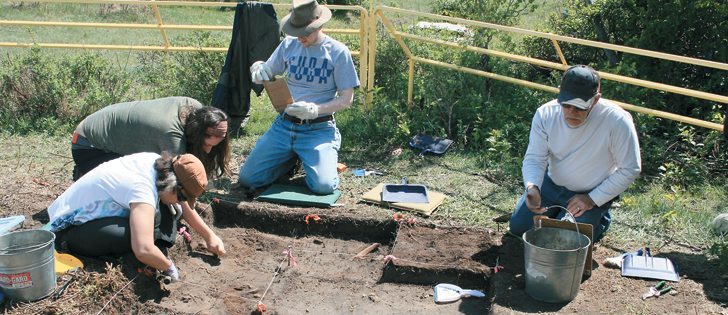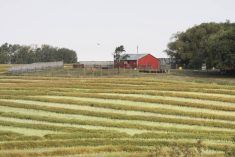Bodo Archeological Centre | Bones, beads and tools can be found at historic dig site
BODO, Alta. — Archeology excavators toil on the sun-baked prairie, often mired in muskeg and bog and at the mercy of unrelenting mosquitoes.
It can take two days digging inch by inch with hand-held trowels and brushes to excavate one sq. foot. Pieces are carefully removed and the remaining dirt screened to discover remaining fragments.
Christie Grekul, senior project archeologist at the Bodo Archeological Centre in eastern Alberta, said this painstaking work opens a window on a civilization that lived hundreds of years ago, uncovering stone hunting and butchering tools, clay pottery and arrowheads.
Read Also

Nutritious pork packed with vitamins, essential minerals
Recipes for pork
“There’s a sense of discovery of something no one has seen in thousands of years. You’re the first person to touch it since,” she said.
“Being able to access it and excavate at it is a rare opportunity.”
She said there are 35,000 recorded archeological sites in the province, but the eight sq. mile Bodo site is one of the larger and better preserved sites, despite being shared by grazing cattle and an oil company.
The sandy site with minimal tree roots makes for easier excavation and has served to preserve the artifacts well.
“A layer of sand over top creates a time capsule,” she said.
“Bones preserve well in a very wet or a very dry environment.”
Blackfoot, Cree and Assiniboine have inhabited the site over the last 5,000 years, as proven by the distinct styles of pottery found here. They came together to hunt and camp in these sand dunes where the grasslands meet the parklands of Alberta.
The absence of European goods shows they were not in contact with other cultures.
“The fact we don’t find that means they weren’t influenced by outsiders because of the location, not being on any main waterway,” said Grekul.
She said the area was considered neutral territory so natives could safely gather here to hunt in the late fall and winter and process mainly bison for the winter.
Her own discoveries have included bison bones a foot deep and cooking utensils. Decorative beads made from bison foot bones have also been unearthed.
Water sources attracted the animals, and the hillsides and sand dunes likely trapped them in valleys where natives were waiting with arrows and spears.
This day, archeology assistant and interpreter Natasha Bani-Sadr painstakingly writes numbers on tiny arrowheads and bones.
Half a million items already collected from Bodo are carefully catalogued and sent to the Royal Alberta Museum, which in turn loans items back to the interpretive centre.
The site was uncovered in 1995 when an oil company backhoe operator pulled out bison bones.
That led to an archeology field school, where Grekul did her graduate studies and helped unearth thousands of artifacts.
Courtney Lakevold, president of the Bodo Archeological Society formed in 2003, grew up on a farm near Provost, Alta., and like Grekul, was part of the field school.
“It’s amazing to me how people could survive here just off the land, what they could find and hunt,” she said.
Lakevold said the local community came together to create the centre, seeing value in protecting the site and opportunities in tourism and revitalizing the small eastern Alberta town.
Lakevold said visits to the centre have increased since it opened, with 50 schoolchildren coming in 2012 compared to 500 last year.
Grekul creates workshops for teachers and brings some of the site’s components into Alberta’s Grade 4-6 social studies curriculum, which have increased its exposure. Marketing through Travel Alberta and www. bodoarchaeology.com and Facebook has also helped.
Lakevold said Bodo offers visitors “experiential tourism.”
“You can see displays but also participate in excavations,” she said, citing the large contingent of board members and other volunteers who regularly help at the centre.
Bodo operates with four staff members using private and corporate sponsorships, fundraising efforts and funding from the Alberta Historical Resources Foundation.
A former school houses the interpretive centre, which is open daily from April to August and by appointment at other times. It offers camps tailored to different ages.

















